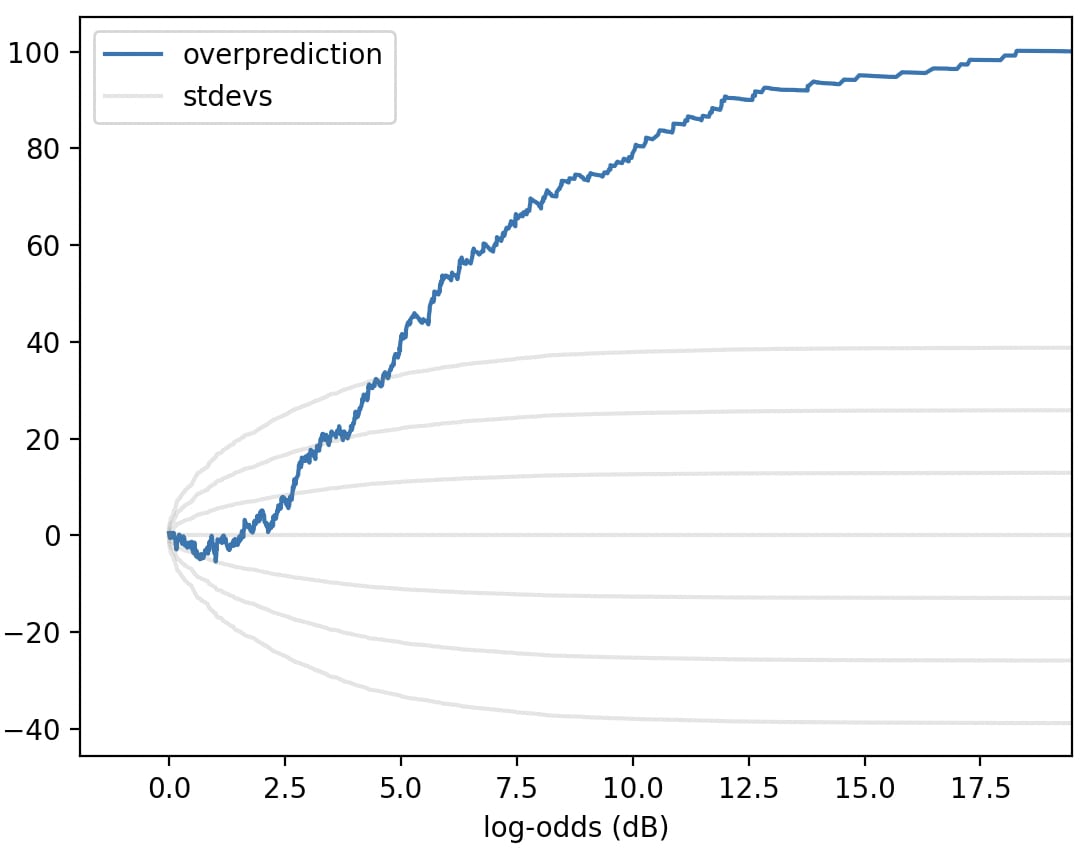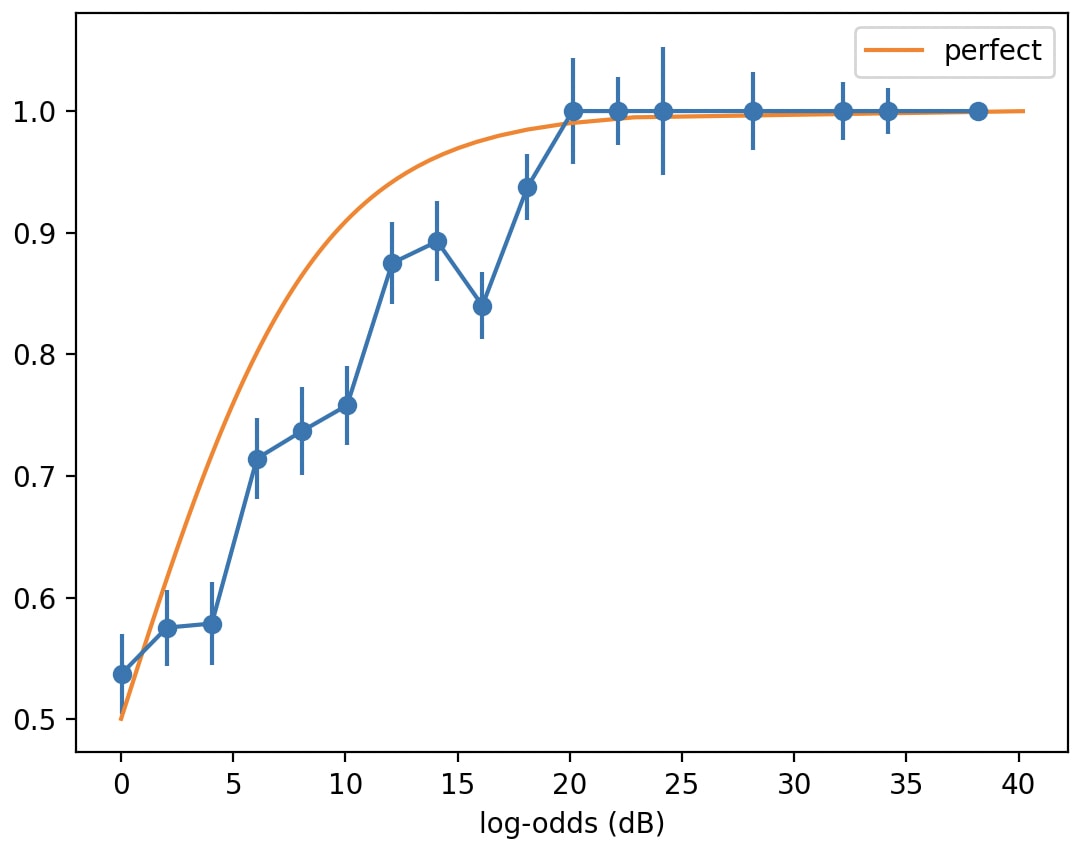Posts
Wikitag Contributions
I like the idea, but with n>100 points a histogram seems better, and for few points it's hard to draw conclusions. e.g., I can't work out an interpretation of the stdev lines that I find helpful.
Nyeeeh, I see your point. I'm a sucker for mathematical elegance, and maybe in this case the emphasis is on "sucker."
I'd make the starting point p=0.5, and use logits for the x-axis; that's a more natural representation of probability to me. Optionally reflect p<0.5 about the y-axis to represent the symmetry of predicting likely things will happen vs unlikely things won't.

(same predictions from my last graph, but reflected, and logitified)
Hmm. This unflattering illuminates a deficiency of the "cumsum(prob - actual)" plot: in this plot, most of the rise happens in the 2-7dB range, not because that's where the predictor is most overconfident, but because that's where most of the predictions are. A problem that a normal calibration plot wouldn't share!
(A somewhat sloppy normal calibration plot for those predictions:

Perhaps the y-axis should be be in logits too; but I wasn't willing to figure out how to twiddle the error bars and deal with buckets where all/none of the predictions came true.)
Question: if I'm considering an isolated system (~= "the entire universe"), you say that I can swap between state-vector-format and matrix-format via
. But later, you say...
If is uncoupled to its environment (e.g. we are studying a carefully vacuum-isolated system), then we still have to replace the old state vector picture by a (possibly rank ) density matrix ...
But if , how could it ever be rank>1?
(Perhaps more generally: what does it mean when a state is represented as a rank>1 density matrix? Or: given that the space of possible s is much larger than the space of possible s, there are sometimes (always?) multiple s that correspond to some particular ; what's the significance of choosing one versus another to represent your system's state?)
That is... a very interesting and attractive way of looking at it. I'll chew on your longer post and respond there!
I have an Anki deck in which I've half-heartedly accumulated important quantities. Here are mine! (I keep them all as log10(value in kilogram/meter/second/dollar/whatever seems natural), to make multiplication easy.)
| Quantity | Value |
|---|---|
| Electron mass | -30 |
| Electron charge | -18.8 |
| Gravitational constant | -10.2 |
| Reduced Planck constant | -34 |
| Black body radiation peak wavelength | -2.5 |
| Mass of the earth | 24.8 |
| Moon-Earth distance | 8.6 |
| Earth-sun distance | 11.2 |
| log10( 1 ) | 0 |
| log10( 2 ) | 0.3 |
| log10( 3 ) | 0.5 |
| log10( 4 ) | 0.6 |
| log10( 5 ) | 0.7 |
| log10( 6 ) | 0.8 |
| log10( 7 ) | 0.85 |
| log10( 8 ) | 0.9 |
| log10( 9 ) | 0.95 |
| Boltzmann constant | -22.9 |
| 1 amu | -26.8 |
| 1 mi | 3.2 |
| 1 in | -1.6 |
| Earth radius | 6.8 |
| 1 ft | -0.5 |
| 1 lb | -0.3 |
| world population | 10 |
| US federal budget 2023 | 12.8 |
| SWE wage (per sec) | -1.4 |
| Seattle min wage (per sec) 2024 | -2.3 |
| 1 hr | 3.6 |
| 1 work year | 6.9 |
| 1 year | 7.5 |
| federal min wage (per sec) | -2.7 |
| 1 acre | 3.6 |
It sounds like you're assuming you have access to some "true" probability for each event; do I misunderstand? How would I determine the "true" probability of e.g. Harris winning the 2028 US presidency? Is it 0/1 depending on the ultimate outcome?